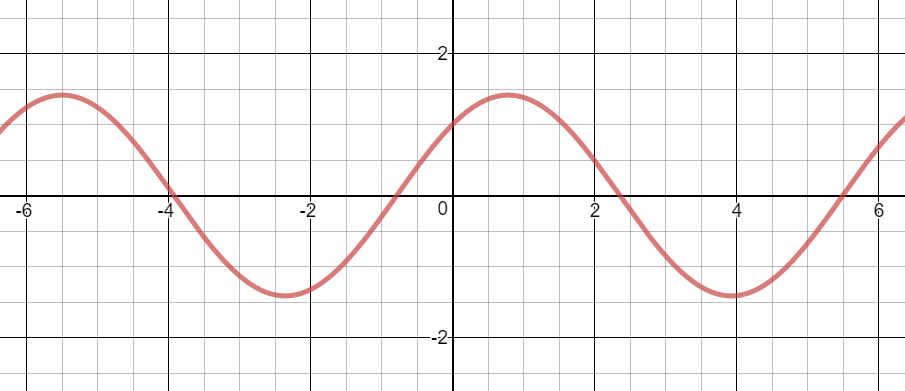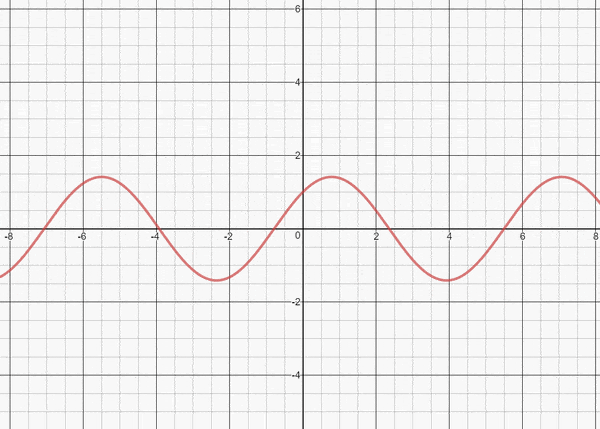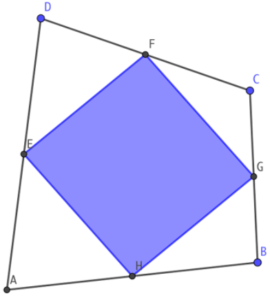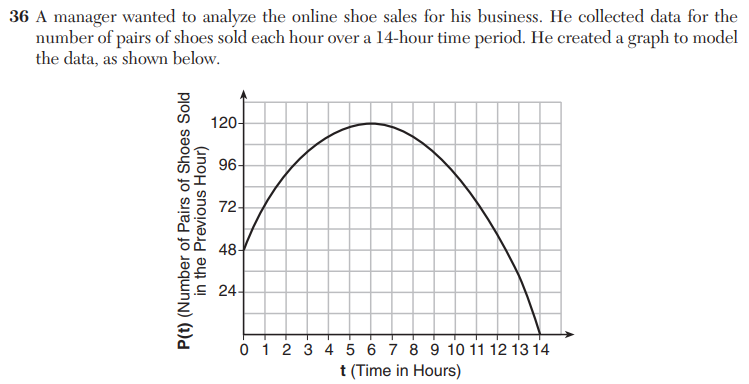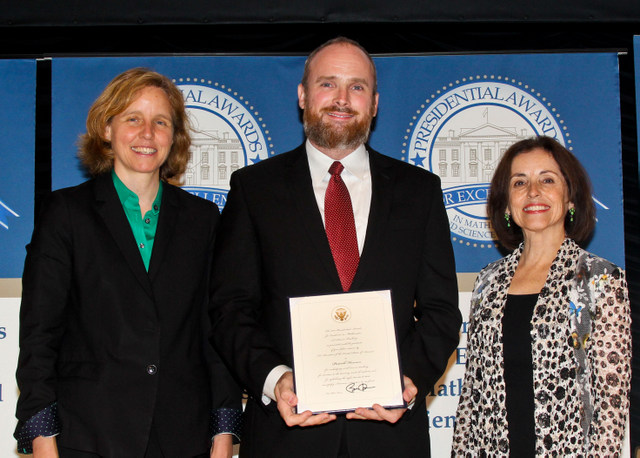Here is a fun little exploration involving a simple sum of trigonometric functions.
Consider f(x) = sin(x) + cos(x), graphed below.
Surprisingly, it appears as though sin(x) + cos(x) is itself a sine function. And while its period is the same as sin(x), its amplitude has changed and it’s been phase-shifted. Figuring out the exact amplitude and phase shift is fun, and it’s also part of a deeper phenomenon to explore.
Consider the function g(x) = a sin(x) + b cos(x). Playing around with the values of a and b is a great way to explore the situation.
On the way to a complete solution, a nice challenge is to find (and characterize) the values of a and b that make the amplitude of g(x) equal to one. It’s also fun to look for values of a and b that yield integer amplitudes: for example, 5sin(x) + 12cos(x) has amplitude 13, and 4sin(x) + 3cos(x) has amplitude 5.
Ultimately, this exploration leads to a really lovely application of angle sum formulas. Recall that
If we let A = x, we get
With a little rewriting, we have
which looks similar to our original function f(x) = sin(x) + cos(x), except for what’s in front of sin(x) and cos(x). We handle that with a clever choice of B.
Let . Now we have
And a little algebra gets us
And so sin(x) + cos(x) really is a sine function! Not only does this transformation explain the amplitude and phase shift of sin(x) + cos(x), it generalizes beautifully.
For example, consider 5sin(x) + 12cos(x). We can rewrite this in the following way.
where .
There’s quite a lot of trigonometric fun packed into this little sum. And there’s still more to do, like exploring different phase shifts and trying the cosine angle sum formula instead. Enjoy!
Related Posts
